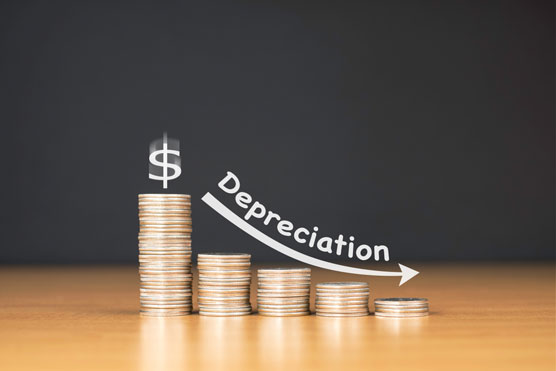
When selling a motel or other accommodation operation, the business value is generally appraised on an over-all basis to arrive at a figure relative to return on investment offered. The chattels are usually not assessed separately and, provided an adequate repairs, maintenance and replacement program has been implemented, their “insitu” value should remain relatively steady. The issue which almost always arises however, is the apportionment to tangible assets on the sale and purchase agreement. The tangible assets (plant and chattels) will usually have been depreciated on the books for tax purposes. The sum calculated for depreciation will be deducted from the taxable income and therefore reduce the tax liability for the operator in that financial year.
The problem arises when it comes to selling. The purchaser (or their accountant) will normally like to see a high chattel figure apportioned on the agreement, so as to be in a position to also claim a reasonable amount for depreciation. The vendor on the other hand would like to show the chattel value as low as possible, if possible at book value or close to, so as not to recover the depreciation previously claimed. Any value apportioned to the tangible assets over and above book value, up to the original cost value, will be treated as income in the year of sale. Whilst the seller is not really paying any additional tax, rather just paying tax that they have been able to defer, the tax in the year of sale can be a painful and sometimes unexpected liability. Further to this, the depreciation will have been claimed in gradual amounts at the tax rate applicable to the overall income for each financial year. If and when all of the depreciation is recovered in one year, it may effectively increase the taxable income for the operator to a higher tax bracket. If so, recovered depreciation may be taxed at a higher rate than has been claimed along the way.
The process of reaching an agreement for the purchase of a business normally involves a certain amount of negotiation. The sum apportioned to tangible assets can be part of that negotiation. A purchaser may accept a lower chattel figure, reducing the vendor’s tax liability. This of course means that the purchaser’s ability to claim depreciation will be reduced due to the lower figure as a starting point.
It is not compulsory to claim depreciation on chattels or other tangible assets. If a business owner elects not to depreciate the chattels at the outset, they can leave them on their books at the same figure, (plus any additional chattels purchased) and that will not be problem for them when they sell. This way, the business owner knows that their tax liability is up to date at all times and they are not building up a potential depreciation recovery issue.
The intangible asset of “goodwill” is often split on a sale agreement and allocated to business goodwill and lease goodwill, the latter sometimes referred to as the benefit of the lease. The lease goodwill can be depreciated, which is termed amortisation, usually on a “straight line” basis. (As distinct from chattels which are normally depreciated on a reducing value basis.) This means that the figure for lease goodwill is divided equally by the number of years left on the lease and that sum is written off against income at the same amount each year. While the amount of depreciation (amortisation) claimed for this aspect is usually less than the chattel depreciation, we often find that the closing book value figure is acceptable to a purchaser. This may be because the lease goodwill component is not always available and therefore seen as a bonus to be able to claim this extra depreciation. If the lease goodwill were to be recorded in a sale agreement at higher than closing book value, then the surplus over book value would be taxable.
In the case of land and buildings such as an investment property or a freehold going concern, the buildings, in most cases, have not been able to be depreciated for tax purposes since the end of the 2011 tax year, with such deductions available again for the tax year commencing April 2021. The owner of the real estate though, may have been claiming depreciation up until the end of the 2011 income year, when the depreciation rate for buildings (with an estimated useful life of 50 years or more) was then reduced to zero %. The building owner may sometimes face the same depreciation recovery issues on sale, if they had owned such buildings prior to 2011.
It must be stressed that this article is in no way intended to offer tax, legal or accounting advice. One should always consult with a qualified professional on matters such as this. If we are able to provide further clarification or information on this topic, we would be pleased to do so.